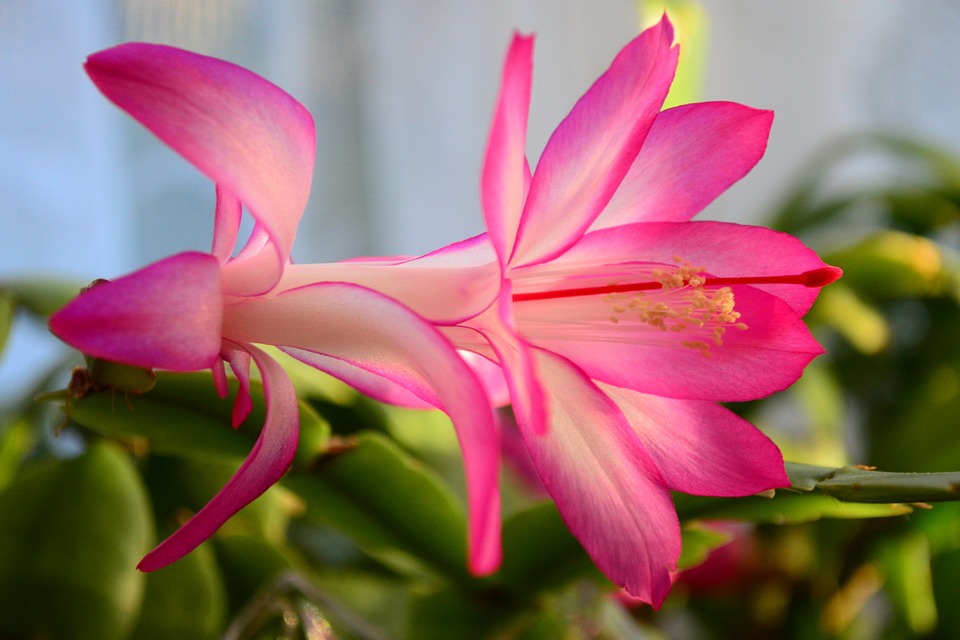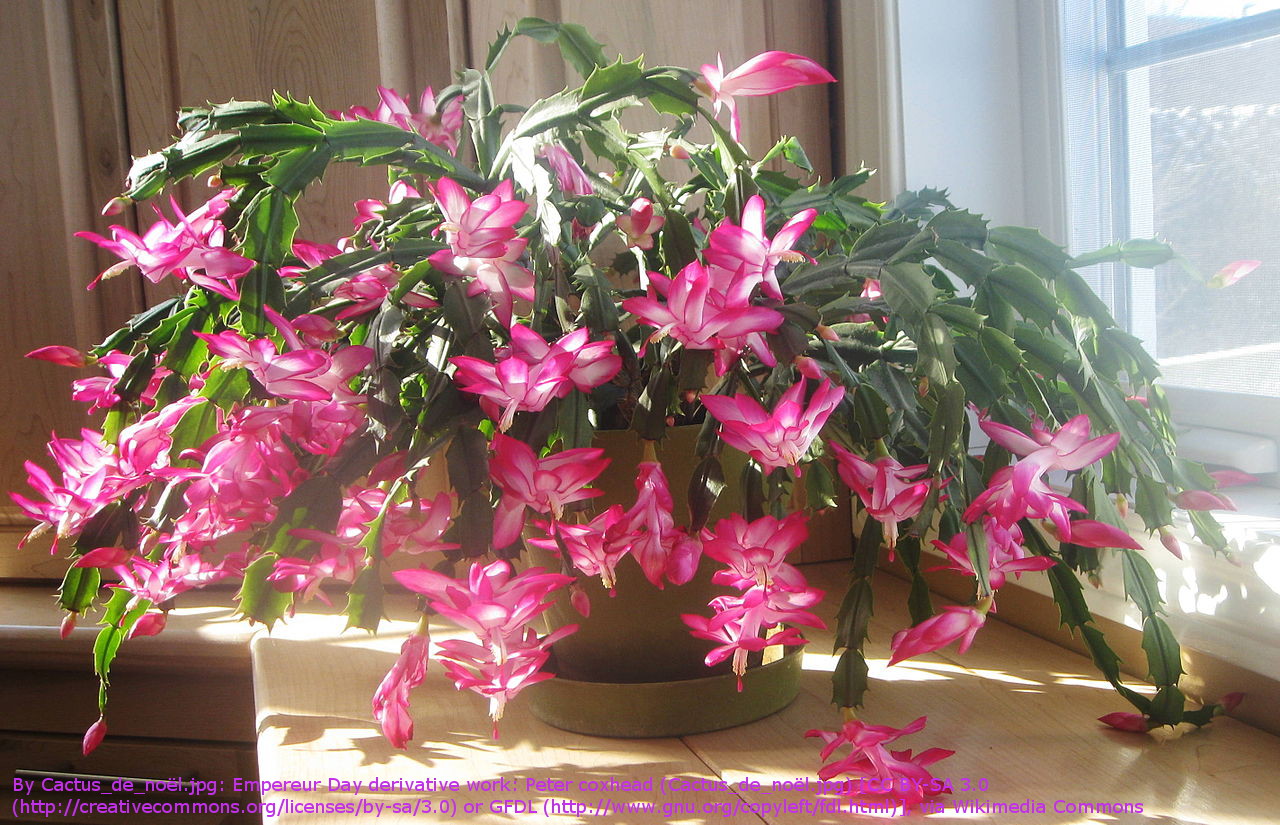By Alastair Culham
 My grandfather grew a huge Christmas cactus which flowered regularly every year. It spent the summers in a shady spot in the garden and the winters indoors away from the frost. It intrigued me because it didn’t look like a cactus – it had no obvious spines and the stems were flat and bright green. However, even if not cactus like it certainly flowered over the Christmas period.
My grandfather grew a huge Christmas cactus which flowered regularly every year. It spent the summers in a shady spot in the garden and the winters indoors away from the frost. It intrigued me because it didn’t look like a cactus – it had no obvious spines and the stems were flat and bright green. However, even if not cactus like it certainly flowered over the Christmas period.
Now there are a myriad of Christmas cactus cultivars with flowers varying from magenta, through red, orange and yellow to brilliant white. Some of these are a little more difficult to grow than my grandad’s plant but all seem to tolerate modern centrally heated houses with good grace.
Cultivation
Christmas cacti are woodland plants that prefer a semi shaded aspect in the summer, although in a UK winter they will tolerate full sun without harm. They like a humid atmosphere but are intolerant of over wet compost, very much like Moth orchids (Phalaenopsis). They like well drained but moist compost (a proprietary cactus mix or John Innes No 2 with added composted bark work well). They do best if kept in small pots and can be repotted each year (or two) around Easter as they begin growth.

At this time of year a healthy Christmas cactus will be flowering so should be kept watered (the flowers can lose a lot of moisture) but as it finishes it will need a rest and a slightly drier period at around 10-15C. From April the plant comes back into vigorous growth and can be given dilute houseplant fertilizer when watered. After any risk of frost Christmas cacti do well outside providing they can be protected from slugs and snails (which can destroy a plant overnight). By September the new flower buds appear and the plant should be brought into a cool room inside and watered sparingly while the buds develop. Once the buds have developed and the flowers are expanding more water will be needed again. Christmas cacti are readily propagated simply by cutting off a piece of stem with three to four years growth, drying the cut end overnight and planting in a well drained cutting compost (50% grit). Rooting takes three to six weeks.
Christmas cactus – what is it and where is it from?
So far I’ve avoided using a scientific name for the Christmas cactus. That’s with good reason, as a child I knew Christmas cactus as Zygocactus truncatus and Easter cactus as Schlumbergera gaertneri but modern taxonomy based on phylogenetic principles tells me both are now wrong. Christmas cactus is Schlumbergera truncata (or one of its hybrids under the name Schlumbergera x buckleyi) and Easter cactus is Hatiora gaertneri, so both haved moved from one genus to another. These two plants form part of the Rhipsalideae – a fascinating group of epiphytic cacti including the only cacti truly native to Africa.

Whichever genus Christmas cactus now belongs to we know it originated in the forests of Eastern Brazil (the Atlantic Forest), a highly threatened series of habitats of great conservation concern. The species grows on rocks and on trees in damp but shallow soil and moss. Although close to the equator, these species are often at high altitude in warm and humid areas that can become quite cold (but rarely freezing) at times. The bright tubular flowers are adapted to hummingbird pollination and not designed to be attractive to humans!

